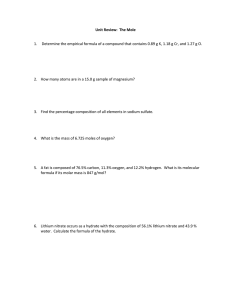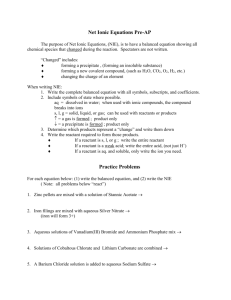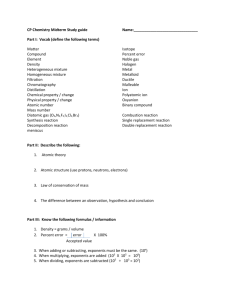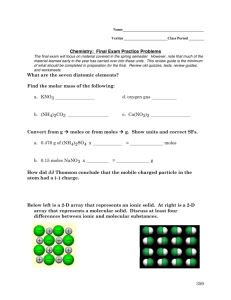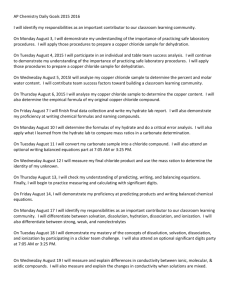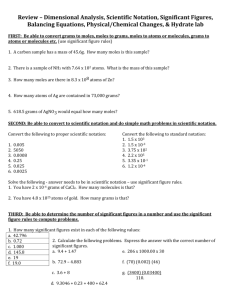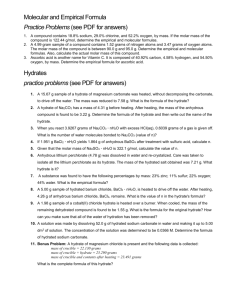CP Chem Unit 5 Practice Test Concepts Predicting products of
advertisement
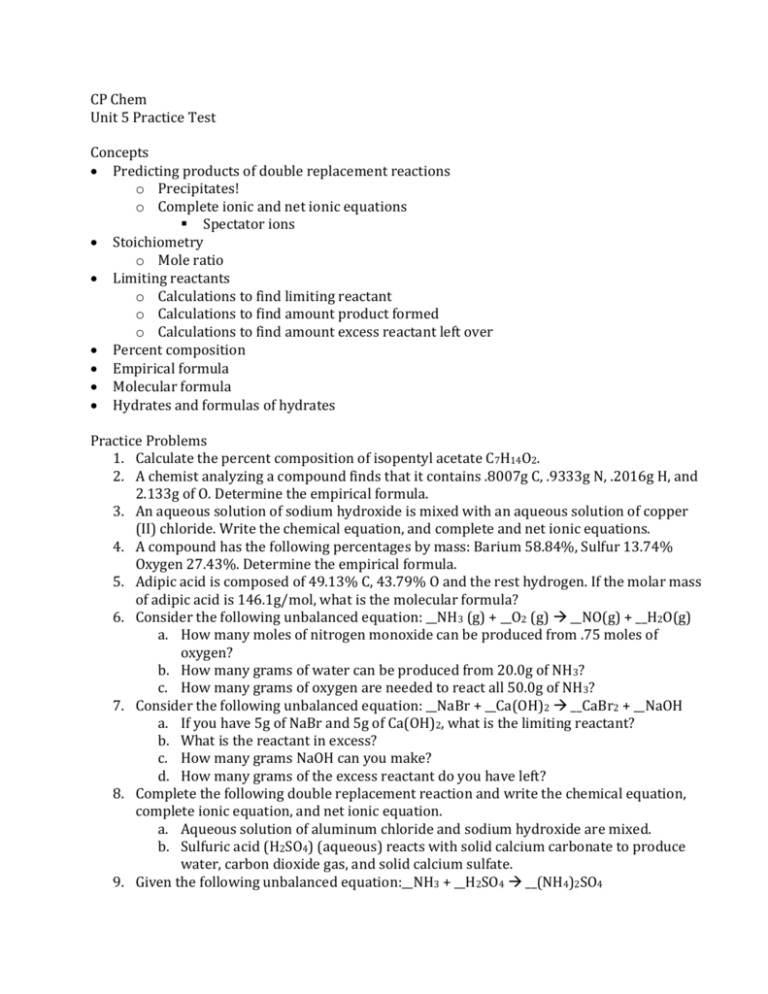
CP Chem Unit 5 Practice Test Concepts Predicting products of double replacement reactions o Precipitates! o Complete ionic and net ionic equations Spectator ions Stoichiometry o Mole ratio Limiting reactants o Calculations to find limiting reactant o Calculations to find amount product formed o Calculations to find amount excess reactant left over Percent composition Empirical formula Molecular formula Hydrates and formulas of hydrates Practice Problems 1. Calculate the percent composition of isopentyl acetate C7H14O2. 2. A chemist analyzing a compound finds that it contains .8007g C, .9333g N, .2016g H, and 2.133g of O. Determine the empirical formula. 3. An aqueous solution of sodium hydroxide is mixed with an aqueous solution of copper (II) chloride. Write the chemical equation, and complete and net ionic equations. 4. A compound has the following percentages by mass: Barium 58.84%, Sulfur 13.74% Oxygen 27.43%. Determine the empirical formula. 5. Adipic acid is composed of 49.13% C, 43.79% O and the rest hydrogen. If the molar mass of adipic acid is 146.1g/mol, what is the molecular formula? 6. Consider the following unbalanced equation: __NH3 (g) + __O2 (g) __NO(g) + __H2O(g) a. How many moles of nitrogen monoxide can be produced from .75 moles of oxygen? b. How many grams of water can be produced from 20.0g of NH3? c. How many grams of oxygen are needed to react all 50.0g of NH3? 7. Consider the following unbalanced equation: __NaBr + __Ca(OH)2 __CaBr2 + __NaOH a. If you have 5g of NaBr and 5g of Ca(OH)2, what is the limiting reactant? b. What is the reactant in excess? c. How many grams NaOH can you make? d. How many grams of the excess reactant do you have left? 8. Complete the following double replacement reaction and write the chemical equation, complete ionic equation, and net ionic equation. a. Aqueous solution of aluminum chloride and sodium hydroxide are mixed. b. Sulfuric acid (H2SO4) (aqueous) reacts with solid calcium carbonate to produce water, carbon dioxide gas, and solid calcium sulfate. 9. Given the following unbalanced equation:__NH3 + __H2SO4 __(NH4)2SO4 a. If you have 15g of NH3 and 10g of H2SO4, how many grams of the product can you make? b. What is the percent composition of the product? 10. A 15.67g sample of a hydrate of magnesium carbonate was heated. The mass was reduced to 7.58g. What is the formula of the hydrate? 11. A 5g sample of a hydrate of barium chloride is heated. The mass after heating is 4.26g. Find the formula of the hydrate. 12. A hydrate is found to be 45.53% water and 54.57% cobalt (II) chloride. Find the formula of the hydrate. 13. A compound is 49.48% C, 5.190%H, 16.47% O and 28.85% N. It has a molar mass of 194.19g/mol. Find the molecular formula. 14. A compound is 18.8% sodium, 29.0% chlorine, and 52.2% oxygen. If the molar mass is 122.44g/mol, determine the empirical and molecular formula.
